The blackcurrant (Ribes nigrum), also known as black currant or cassis, is a deciduous shrub in the family Grossulariaceae grown for its edible berries. It is native to temperate parts of central and northern Europe and northern Asia, where it prefers damp fertile soils. It is widely cultivated both commercially and domestically.
It is winter hardy, but cold weather at a flowering time during the spring may reduce the size of the crop. Bunches of small, glossy black fruit develop along the stems in the summer and can be harvested by hand or by machine. Breeding is common in Scotland, Poland, Lithuania, Latvia, Norway, and New Zealand to produce fruit with better eating qualities and bushes with greater hardiness and disease resistance.[rx]
The raw fruit is particularly rich in vitamin C and polyphenols. Blackcurrants can be eaten raw, but are usually cooked in sweet or savoury dishes. They are used to make jams, preserves, and syrups and are grown commercially for the juice market. The fruit is also used to make alcoholic beverages and dyes.
| Black currant Quick Facts | |
|---|---|
| Name: | Black currant |
| Scientific Name: | Ribes nigrum |
| Origin | Native to Northern Europe and Northern Asia |
| Colors | Black |
| Shapes | Globe shaped, sparsely glandular, 0.8-1(-1.4) cm, Diameter: 1 cm |
| Taste | Sour |
| Health benefits | Cardiovascular health, Lowers blood pressure, Regulates cholesterol level, Prevent formation of cancer, Prevent infections |
Also referred to as European black currant, Blackcurrant, Black currant, Siyah Frenkuzumu, Quincy berries, Gichtbeerblaetter, Grosella Negra, Groseille Noir, Nabar, Huile de Pépins de Cassis, Paper, Ribes Nero, Ribes Nigri Folium, and Ribes nigrum, it is a deciduous and branched shrub which requires damp, fertile and well-drained soil. The plant grows up to the height of 1-2 m (3-6.5 ft). It possesses alternate, simple leaves having toothed edges that measure about 2.5-10.5 cm long and 2.5-12 cm broad. The buds are brown, yellowish, oblong to ovoid to ellipsoid about (3-)4-7 mm in size. It has bisexual flowers and its color ranges from yellow to green of 10-11 mm long. The flower turns into a globe-shaped, sparsely glandular fruit measuring 0.8-1(-1.4) cm and 1 cm in diameter. The fruit is aromatic and black in color with smooth peel. It possesses aromatic, strong, and tart flavor with a sour taste.
Black currant facts
Black currant is helpful for treating various ailments that are possessed with various vitamins. Besides its healing and therapeutic uses, it is used to make jellies, jams that provide sweet flavor. It is used as toppings for desserts and used as dips or sauces. It is used to make ice cream, cordial, liquor, and juice.
| Name | Black currant |
|---|---|
| Scientific Name | Ribes nigrum |
| Native | Native to Northern Europe and Northern Asia |
| Common/English Name | European black currant, Blackcurrant, Black currant , Siyah Frenkuzumu , Quincy berries , Gichtbeerblaetter , Grosellero negro, Kurokarin, Garden black currant, Black Currant Seed Oil, Cassis, Feuille de Cassis, Gadelier Noir, Grosella Negra, Groseille Noir, Nabar, Huile de Pépins de Cassis, Paper, Ribes Nero, Ribes Nigri Folium, Ribes nigrum |
| Name in Other Languages | French: cassis, cassissier, gadellier noir, groseillier noir; German: Ahlbeere, schwarze Johannisbeere; Italian: ribes nero; Japanese Rōmaji: kuro-fusa-suguri, kuro-suguri; Portuguese: groselheira-preta, groselheira-negra; Transcribed Chinese: hei cha biao zi; Arabic: Kishmish aswad, Nnbaq aswad (Morocco), Chinese: Hei sui cu li (黑穗 醋栗), Yuán yè zǎo hé zi (圆叶早禾子), Fāng yè wǔ yuè chá (方叶五月茶), Tián biān mù (田边木); Danish: Solbær; Dutch: Zwarte aalbes, Zwarte trosbes, Zwarte bes; Finnish: Mustaherukka; Greek: Fragostafyla mavra (Φραγκοστάφυλα μαύρα); Italian: Ribes nero; Japanese: Kuro fusa suguri (ク ロフサスグリ); Portuguese: Groselha negra, Groselheira-preta, Groselheira negra; Spanish: Casis, Grosellero negro, Grosella negra; Swedish: Tistron, Svart vinbär, mustaherukka; Finnish: mustaherukka; Hindi: umtao (ऊमटौ); Malayalam: Kattupulinchi, Poothuruval; Vietnamese: chop moi, dang kiêp kdam; Croatian: crni ribiz; Czech: černý rybíz; Finnish: mustaviinimarja; French: cassis; German: Johannisbeere; Korean: frankostáfylo (블랙커런트); Norwegian: solbær; Polish: czarna porzeczka; Romanian: coacăz negru; Russian: chernaya smorodina (черная смородина); Swedish: svart vinbär; Thai: P̄hl bæ l̆khkhex rænt̒ (ผลแบล็คเคอแรนต์ ); Turkish: kuşüzümü; Ukrainian: chorna smorodyna (чорна смородина); |
| Plant Growth Habit | Deciduous, many branched shrub |
| Soil | Well-drained, damp, fertile |
| Plant Size | Height: 1-2 m (3-6.5 ft) |
| Leaves | Alternate, simple, toothed edged, Length: 2.5-10.5 cm, Broad: 2.5-12 cm |
| Buds | Brown, yellowish, (3-)4-7 mm, oblong to ovoid to ellipsoid |
| Flower | Bisexual, yellow, green, Length: 10-11 mm |
| Petals | Pubescent, yellow glandular, 1.5 to 2.5 mm |
| Fruit shape & size | Globe shaped, sparsely glandular, 0.8-1(-1.4) cm, Diameter: 1 cm |
| Fruit color | Black, aromatic |
| Fruit peel | Smooth |
| Flavor/aroma | Aromatic, strong, tart |
| Fruit Taste | Sour |
Black Currant Scientific Classification
Scientific Name: Ribes nigrum L.
| Rank | Scientific Name & (Common Name) |
|---|---|
| Kingdom | Plantae (Plants) |
| Subkingdom | Tracheobionta (Vascular plants) |
| Infrakingdom | Streptophyta (land plants) |
| Superdivision | Spermatophyta (Seed plants) |
| Division | Magnoliophyta (Flowering plants) |
| Class | Magnoliopsida ( Dicotyledons) |
| Subclass | Rosidae |
| Order | Rosales |
| Family | Grossulariaceae (Currant family) |
| Genus | Ribes L.(currant) |
| Species | Ribes nigrum L. ( European black currant) |
| Synonyms |
|
The fruits Blackcurrants have a high content of anthocyanins that possess antioxidant activities and provide various health-promoting activities. It has a high content of antioxidants in comparison to other fruits, vegetables including blueberries. Apart from its taste, it has a high content of nutrition. It is a great source of Vitamin C that enhances the ability of the body to absorption of iron. It enhances the immunity power to counteract common diseases such as infection, flu, and cold. It promotes vision health as well as cardiovascular health.
History
Native to Northern Europe and Northern Asia. Blackcurrant was cultivated in the 11th century in Russia. In the 17th century, the cultivation of Blackcurrant got started. It was used for medicinal properties. The syrup made with the juice boiled with sugar is used to cure sore throats and lower fevers. The decoction made from bark, leaves, and roots is used as a traditional remedy.
During World War II, the United Kingdom used blackcurrant berries as the source of Vitamin. The plants became suitable to grow in the climate of the UK, so British Government promoted the cultivation of Blackcurrant plant. In Britain, about 1400 hectares of Blackcurrant fruits were grown.
| Nutritional value per 100 g (3.5 oz) | |
|---|---|
| Energy | 264 kJ (63 kcal) |
|
Carbohydrates
|
15.4 g
|
|
Fat
|
0.4 g
|
|
Protein
|
1.4 g
|
| Vitamins | Quantity
%DV†
|
| Thiamine (B1) |
4%
0.05 mg |
| Riboflavin (B2) |
4%
0.05 mg |
| Niacin (B3) |
2%
0.3 mg |
| Pantothenic acid (B5) |
8%
0.398 mg |
| Vitamin B6 |
5%
0.066 mg |
| Vitamin C |
218%
181 mg |
| Vitamin E |
7%
1 mg |
| Minerals | Quantity
%DV†
|
| Calcium |
6%
55 mg |
| Iron |
12%
1.54 mg |
| Magnesium |
7%
24 mg |
| Manganese |
12%
0.256 mg |
| Phosphorus |
8%
59 mg |
| Potassium |
7%
322 mg |
| Sodium |
0%
2 mg |
| Zinc |
3%
0.27 mg |
| Other constituents | Quantity |
| Water | 82 g |
|
|
|
| †Percentages are roughly approximated using US recommendations for adults. Source: USDA FoodData Central |
|
Health Benefits of Black currant
Black currant berries are an excellent source of flavonoids, Vitamin C, proanthocyanidins, anthocyanins. It possesses 15-195 fatty acids such as alpha and gamma-linolenic acid, anthocyanidins, stearidonic acid, and flavonoids. It is used as diaphoretic, diuretic, and antipyretic. It is used to treat flu and cold. The leaves are useful for the treatment of spasmodic cough, diarrhea, and sore throat. The oil extracted from the seeds of Black currant possess anti-inflammatory, antioxidant, immunostimulant, cardioprotective, and skin protective properties. Some of the health benefits are discussed below:
- Cardiovascular health
The consumption of Black currant daily is helpful for maintaining heart health by lowering the chances of cardiovascular problems such as stroke, heart attack, and irregular heartbeats. It is due to the presence of flavonoids in Black currants. Additionally, it is a great source of antioxidants that prevents the chances of oxidative damage and lower the formation of toxic substances on the blood vessels. It smoothens the flow of blood in the cardiovascular system.
- Lowers blood pressure
Blackcurrant berry is helpful for people with high blood pressure. The daily intake of blackcurrant is helpful for lowering high blood pressure due to the presence of potassium which acts as a natural vasodilator that relaxes the blood vessels and smoothens the flow of blood by regulating the pressure of blood. Additionally, the regulation of blood pressure lowers the chances of heart attack or stroke.
- Regulates cholesterol level
Blackcurrant is a great source of Omega-3 fatty acids that helps to regulate the level of cholesterol in the body. The adequate consumption of black currant helps to lower the level of LDL cholesterol and enhance HDL cholesterol. The excessive presence of LDL cholesterol is harmful to the health as it blocks arteries and blood vessels and increases the chances of cardiovascular problems such as heart stroke, heart attack, and irregular heartbeats.
- Prevent formation of cancer
Blackcurrants have anti-carcinogenic properties that lower the chances of cancer development in the body. It has antioxidants such as zeaxanthin, cryptoxanthin, beta carotene, and Vitamin C. The antioxidants counteract free radicals and prevent the chances of oxidative damage of body cells and lower the chances of cancer. The daily intake of Blackcurrant lowers the chances of cancer and prevents the cells from oxidative damage.
- Prevent infections
Blackcurrants help to make the immune system strong and prevent the chances of infections which is possible due to the presence of Vitamin C which acts as an antioxidant that counteracts free radicals that exist in the body and prevents the chances of oxidative damage to the body cells. It lowers the chances of getting fever, colds,s, and infections.
- Lowers bacterial infections
The daily intake of Black currant helps to lower the chances of bacterial infections such as urinary tract infection due to the presence of chemical compounds such as anthocyanin and tannin. It prevents the growth of bacteria in the urinary tract and lowers the risk of infection.
- Enhance memory
Blackcurrant is vital for maintaining brain health. The daily consumption of Blackcurrant sharpens memory and enhances the supply of oxygen to the brain. It is due to the presence of antioxidants and iron. It enhances the oxygen supply to the brain and nerve cells and assists its function. It counteracts free radicals and prevents oxidative damage to the brain. It lowers the chances of neurodegenerative diseases such as Parkinson’s disease and Alzheimer’s disease.
- Prevent anemia
Blackcurrant is helpful for lowering the chances of anemia and providing relief from it. It is due to the presence of iron. It assists in the formation of red blood cells and promotes oxygenated blood to reach every part of the body and also lowers the chances of anemia. Additionally, blackcurrant has copper that is vital for the formation of new blood cells. The common symptoms of anemia are weakness, general fatigue, dizziness, tongue swelling, pale skin, irregular heartbeat, and headache.
- Prevent gastrointestinal inflammation
It is a great source of antioxidants and compounds such as phytonutrients, anthocyanin, and tannins. It prevents the chances of gastrointestinal and cardiovascular inflammation.
- Vision health
The consumption of black currants regularly helps to maintain eye health. Blackcurrants are a great source of antioxidants such as Vitamin C that counteracts free radicals from the body and prevents oxidative damage to the eyes. It lowers the chances of eye problems such as cataracts and macular degeneration. Additionally, it plays a vital role in maintaining eye health as it improves eyesight and lowers the chances of vision loss.
Types of Black Currants
We are able to discover various kinds of black currants all over the world. Some of the types are outlined below-
1. Ben Connan
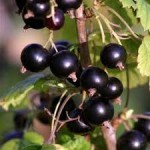 It is really an earlier assortment of black currant, creating 4 or 5 days sooner than Ben Lomond in the United Kingdom. It really is regarded as a very high producing variety in the UK and also displays even as well as standard maturing. It’s got big, deep blackberries (187 Connan berries vs. 206 Lomond berries/250 grams fruit) having an enjoyable acid/sweet taste. Its small development habit causes it to be ideal for mechanized fruit harvesting, U-pick farms, and also the home garden market. The Ben Connan variety is ideal for fresh consuming, jams, preserves, and also canning yet has to be well harvested and also ripened to find the best sweetness. This particular variety is actually not preferably suited to juice manufacturing. Whilst not totally resistant against White Pine Blister Rust, this particular variety has got relativity lower levels of infection.
It is really an earlier assortment of black currant, creating 4 or 5 days sooner than Ben Lomond in the United Kingdom. It really is regarded as a very high producing variety in the UK and also displays even as well as standard maturing. It’s got big, deep blackberries (187 Connan berries vs. 206 Lomond berries/250 grams fruit) having an enjoyable acid/sweet taste. Its small development habit causes it to be ideal for mechanized fruit harvesting, U-pick farms, and also the home garden market. The Ben Connan variety is ideal for fresh consuming, jams, preserves, and also canning yet has to be well harvested and also ripened to find the best sweetness. This particular variety is actually not preferably suited to juice manufacturing. Whilst not totally resistant against White Pine Blister Rust, this particular variety has got relativity lower levels of infection.
2. Ben Terran
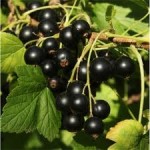 The Ben Terran is really a higher producing, late cultivar along with smaller berries having a pleasurable taste. The Ben Terran is recognized as a fantastic berry for juicing. It flowers just a little after various other Ben series black currants therefore it has a sensible ability to tolerate spring frosts. Growth habit is vertical and also energetic. Fruit is acceptable both for juice as well as jams, for industrial and also u-pick functions, and home gardens. The Ben Terran is fairly prone to White Pine Blister Rust but has good resistance to mold.
The Ben Terran is really a higher producing, late cultivar along with smaller berries having a pleasurable taste. The Ben Terran is recognized as a fantastic berry for juicing. It flowers just a little after various other Ben series black currants therefore it has a sensible ability to tolerate spring frosts. Growth habit is vertical and also energetic. Fruit is acceptable both for juice as well as jams, for industrial and also u-pick functions, and home gardens. The Ben Terran is fairly prone to White Pine Blister Rust but has good resistance to mold.
3. Ben Nevis
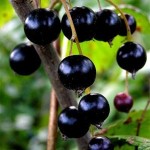 The Ben Nevis, black currant variety, is really a “sister seedling” of Ben Lomond. This particular choice is really an effective, mid-season currant along with huge, firm berries. It’s got great frost tolerance without any indications of overwintering issues within the Edmonton area. This specific selection of black currant is resistant against mold and also generates moderate size fruit.
The Ben Nevis, black currant variety, is really a “sister seedling” of Ben Lomond. This particular choice is really an effective, mid-season currant along with huge, firm berries. It’s got great frost tolerance without any indications of overwintering issues within the Edmonton area. This specific selection of black currant is resistant against mold and also generates moderate size fruit.
4. Ben Alder
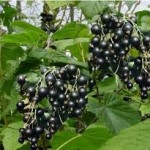 This particular choice of black currant is recognized as great for juicing, due to its higher amounts of anthocyanins, high vitamin C content and high color balance additionally the medium-size berries create a juice with great color. Since this variety is late to flower, it might help in the prevention of late spring frosts. The tiny size of the Ben Alder berries plays a role in a higher percentage of anti-oxidants. Plants display energetic development, as well as the growth habit, is vertical which allows for easy mechanical cropping.
This particular choice of black currant is recognized as great for juicing, due to its higher amounts of anthocyanins, high vitamin C content and high color balance additionally the medium-size berries create a juice with great color. Since this variety is late to flower, it might help in the prevention of late spring frosts. The tiny size of the Ben Alder berries plays a role in a higher percentage of anti-oxidants. Plants display energetic development, as well as the growth habit, is vertical which allows for easy mechanical cropping.
5. Ben Sarek
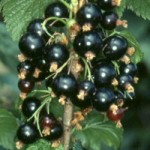 This particular black currant variety is usually a mid-season cultivar along with huge firm berries. The Ben Sarek is really a considerably small semi-dwarf shrub having an average height of 3 ft that makes it ideal for u-pick and home gardens and is usually not utilized in operations that use mechanical harvesters. Fruit is created roughly 7 days sooner than Ben Lomond. With regards to White Pine Blister Rust, even though Ben Sarek features a “fair resistance” it really is usually not regarded as a tolerant variety.
This particular black currant variety is usually a mid-season cultivar along with huge firm berries. The Ben Sarek is really a considerably small semi-dwarf shrub having an average height of 3 ft that makes it ideal for u-pick and home gardens and is usually not utilized in operations that use mechanical harvesters. Fruit is created roughly 7 days sooner than Ben Lomond. With regards to White Pine Blister Rust, even though Ben Sarek features a “fair resistance” it really is usually not regarded as a tolerant variety.
6. Ben Hope
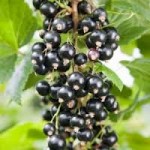 The Ben Hope is actually an excellent producing black currant variety, which is energetic and also taller, developed in the Scottish Crop Research Institute. According to wind conditions, the Ben Hope may need a protected site. Regarded by many people to be the very best tasting fruit of all our types, it displays excellent resistance against foliar illnesses and it has an excellent ability to resist both mildew and also leaf spots. In PEI this particular variety appears extremely prone to a number of White Pine Blister Rust that totally protects the crop and also decreases future yields. The Ben Hope blossoms 2 days right after Ben Lomond and may generally be gathered 10 days after the Ben Lomond variety. Ben Hope yields are regularly high. They generate medium-sized berries with higher physical attributes and also the fruit is suitable for industrial production.
The Ben Hope is actually an excellent producing black currant variety, which is energetic and also taller, developed in the Scottish Crop Research Institute. According to wind conditions, the Ben Hope may need a protected site. Regarded by many people to be the very best tasting fruit of all our types, it displays excellent resistance against foliar illnesses and it has an excellent ability to resist both mildew and also leaf spots. In PEI this particular variety appears extremely prone to a number of White Pine Blister Rust that totally protects the crop and also decreases future yields. The Ben Hope blossoms 2 days right after Ben Lomond and may generally be gathered 10 days after the Ben Lomond variety. Ben Hope yields are regularly high. They generate medium-sized berries with higher physical attributes and also the fruit is suitable for industrial production.
7. Consort
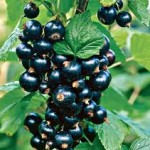 The consort black currant is definitely an earlier mid-season variety that is regarded as being just fair in productivity. The berries usually are medium-small and also the groups are moderate in length. Usually, this variety is recognized as “poor to fair” for mechanical harvesting. Plants are prone to leaf spots and intensely vulnerable to mildew, yet resistant against white pine blister rust. This particular variety is recognized as of value in the growing area exactly where resistance to rust is needed.
The consort black currant is definitely an earlier mid-season variety that is regarded as being just fair in productivity. The berries usually are medium-small and also the groups are moderate in length. Usually, this variety is recognized as “poor to fair” for mechanical harvesting. Plants are prone to leaf spots and intensely vulnerable to mildew, yet resistant against white pine blister rust. This particular variety is recognized as of value in the growing area exactly where resistance to rust is needed.
8. Titania
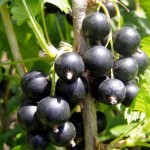 Titania is distinguishable from other types when it comes to achieving maturation in 3 seasons along with excellent disease resistance. Even though this variety does offer much better resistance to White Pine Blister Rust, both a Danish study as well as an OACC study has discovered WPBR on Titania plants. The Titania does have excellent resistance to mildew. This particular variety is recognized for constant cropping and also generates big firm berries which have an excellent mild taste that is great for processing and also reasonably higher juice quality. Plants are very energetic along with ripening as well as flowering being nearly the same as Ben Lomond.
Titania is distinguishable from other types when it comes to achieving maturation in 3 seasons along with excellent disease resistance. Even though this variety does offer much better resistance to White Pine Blister Rust, both a Danish study as well as an OACC study has discovered WPBR on Titania plants. The Titania does have excellent resistance to mildew. This particular variety is recognized for constant cropping and also generates big firm berries which have an excellent mild taste that is great for processing and also reasonably higher juice quality. Plants are very energetic along with ripening as well as flowering being nearly the same as Ben Lomond.
9. Tiben
Tiben is renowned for its higher yield, higher amounts of anthocyanins, and also vitamin C along with its even maturing, vertical development as well as resistance to mildew. It really is considered to be fairly resistant against White Pine Blister Rust in Poland. In comparative yield research, it was demonstrated that Tiben recorded greater yields as compared to ‘Ben Lomond’ (both medium-late). ‘Tiben’ (‘Titania’ × ‘Ben Nevis’) additionally had powerful development along with a potential to deal with powdery mildew [Sphaerotheca mors-uvae] much like ‘Titania’.
10. Tisel
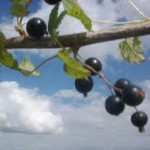 Tisel is renowned for its outstanding higher yields, even ripening, extremely high amounts of vitamin C. Additionally it is described as an extremely enjoyable fresh taste. It ripens relatively sooner than Titania and two weeks sooner than Tiben. This particular variety of black currant is resistant against mildew as well as safe from White Pine Blister Rust.
Tisel is renowned for its outstanding higher yields, even ripening, extremely high amounts of vitamin C. Additionally it is described as an extremely enjoyable fresh taste. It ripens relatively sooner than Titania and two weeks sooner than Tiben. This particular variety of black currant is resistant against mildew as well as safe from White Pine Blister Rust.
Traditional uses
- It possesses diaphoretic and diuretic properties.
- It is used to treat flu and colds.
- The juice is used to treat indigestion and diarrhea.
- It is used to lower blood pressure.
- The infusion made from black currant is used to treat rheumatic pain, dropsy, and whooping cough.
- It is used as a gargle for mouth ulcers and sore throats.
- The infusion made from leaves is used to increase the secretion of cortisol.
- The young root infusion is useful for eruptive fevers.
- The decoction made from the bark is used to treat dropsy, calculus, and haemorrhoidal tumors.
- In Austria, it is used to treat infections of the gastrointestinal tract, cardiovascular system, and respiratory tracts.
- It is used to treat flu, colds and also calms diarrhea.
- The leaves are used to lower blood pressure and treat inflammation and arthritic pain.
- The gargle made from black currant leaves is used to treat canker sores and sore throats.
- It is used to treat eczema, menstrual swelling, and other skin conditions.
- The dried leaf is effective for the treatment of joint pain, gout, arthritis, colic, diarrhea, liver ailments, hepatitis, and convulsions.
- It is useful for treating liver problems such as hepatitis and jaundice.
- It is a cure for skin ailments such as eczema, dermatosis, insect bites, and abscess.
Precautions
- It might slow down the clotting of blood.
- It increases the chances of bruising and bleeding in patients with bleeding disorders.
- Do not take it before two weeks of scheduled surgery.
- Allergic people should avoid it.
- Swelling, hives, rashes, tightness in chest, throat, itching, chest pains, and difficulty in breathing might be experienced.
How to Eat
- It is used to prepare jellies, jams, and juices.
- It is also added to desserts and baked goods and also used as an accompaniment to meat dishes.
- Blackcurrants are used for making liqueur named crème de cassis.
- It could be consumed raw.
- It is used to make preserves.
- It is included in yogurt, desserts, cheesecakes, ice cream, sweet dishes, and sorbets.
- It is used for savory cooking and adds flavor to meat, sauces, and other dishes.
- It could be added to mint and tomato for making the salad.
- It is added to alcoholic beverages.
- It is added to smoothies as well.
- It is used to bake pies and to add flavor to ice cream, pavlova, shortbread, and yogurt.
- It is added to cereals and muffins.
- It is used to add flavor to drinks.
Other Facts
- Due to the high content of nutrition and less popularity it is called forgotten fruit.
- Though it has a strong and tart flavor, it could be consumed raw.
- It contains four times more Vitamin C in comparison to oranges.
- It is used as a vital ingredient in cosmetics.
- It could lower the appearance of dark circles under tired eyes.
- The presence of polyphenols in Blackcurrants helps to enhance the circulation of blood.
References






